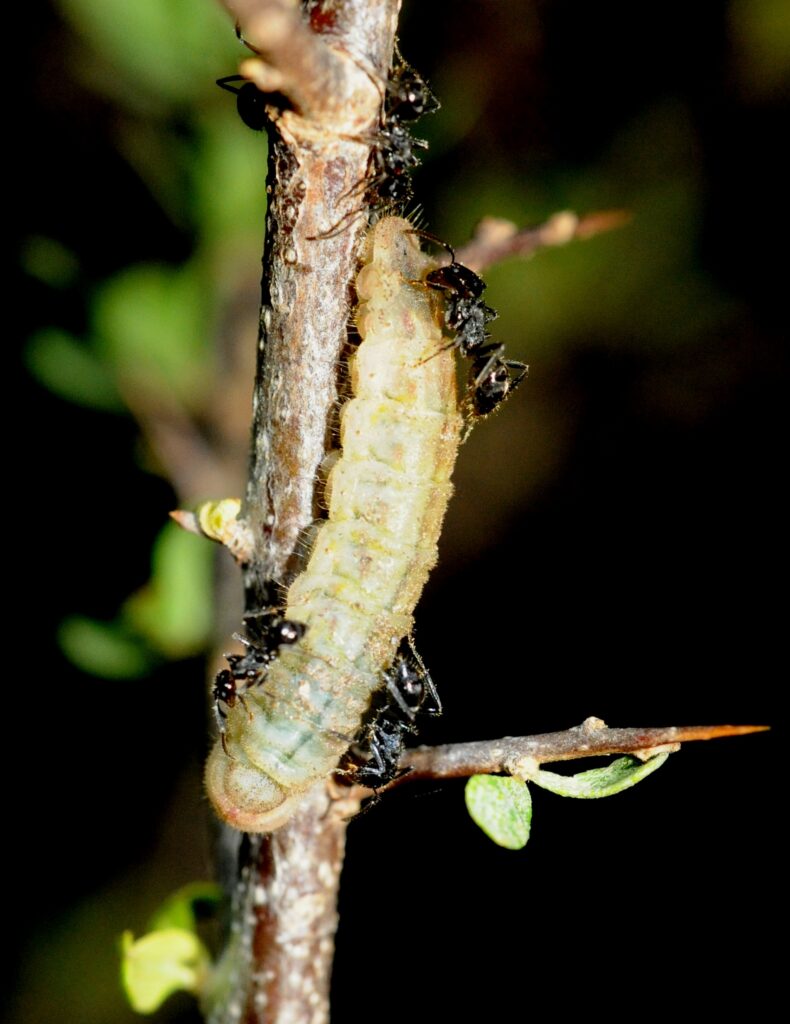Eltham Copper Butterflies like many of the Blue butterfly family (Lycaenidae) have a weird, wonderful and totally dependent (obligate) three-way relationship with Notoncus ant species and Sweet Bursaria plants (Bursaria spinosa). Not to mention an unknown array of environmental factors including food for the ants, relationships with predators and parasites, aspect, soil type, soil chemistry and other nectar sources for adult ECB to eat. It is a small attractive butterfly with bright copper colouring on the tops of its wings and can only be seen during summer months.
Eltham Copper Butterfly larvae feed exclusively on Sweet Bursaria. The adult ECB lay their eggs on or at the base of Sweet Bursaria plants that host a Notoncus ant colony. Notoncus ants are nocturnal ants which live underground in nests, including at the base of Sweet Bursaria plants. Once hatched the larvae are guided by Notoncus ants into the ant nest where they are tended and guarded. This amazing service is achieved through a mixture of trickery and treats. Trickery in that the larvae of this family of Blue Butterflies are believed to give off chemicals and make noises that can pacify ant aggression, mimic ant brood hormones, attract and alert ants if larvae is alarmed. Treats in that the ants feed from sugary secretions which are produced from ECB larvae in proportion to how many ants they need to guard them.
These nocturnal ants then lead the larvae out on warm nights (>12°) to browse on the Sweet Bursaria leaves and defend them from the many nocturnal predators that see them as a juicy snack. ECB larvae overwinter in the ant nest. Larvae pupate in or near the ant nest, with adult butterflies emerging from October to March each year, peaking from November to January. The adults feed on nectar of flowers, especially Sweet Bursaria flowers, before they lay their eggs at the base of the plant, and on the cycle begins again.
